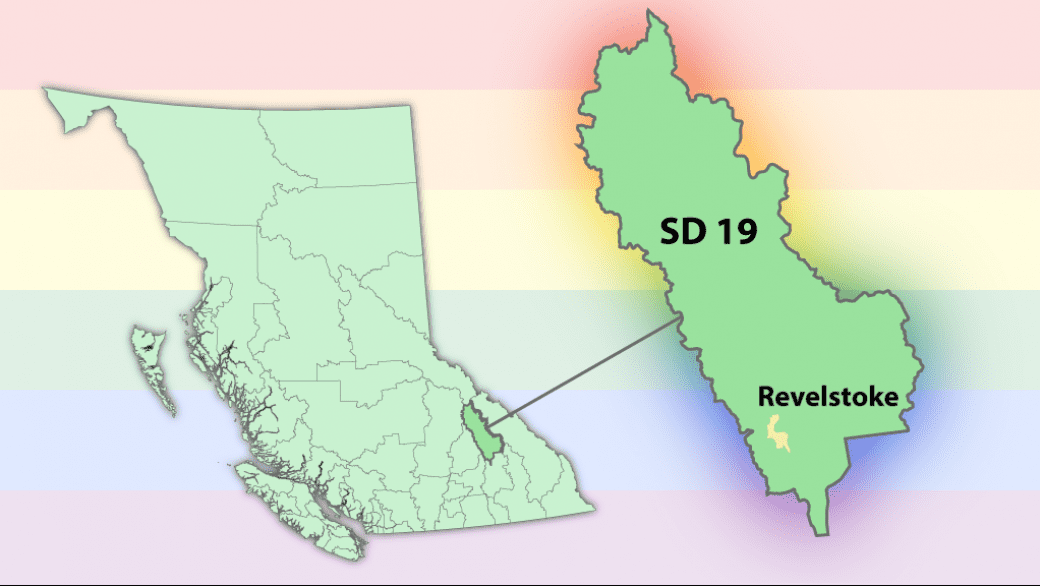Nearly a year after passing its anti-homophobia policy, staff and school trustees in Revelstoke decided to make their commitment to LGBT students more prominent.
On May 2, 2016, they posted a plaque with the policy and a rainbow flag at the entrance to all four schools in their district.
Now it’s a permanent feature in every school, says Mike Hooker, the district’s superintendent.

(“The Revelstoke Board of Education will not tolerate homophobic or discriminatory behaviour or bullying towards members of the LGBTQ community,” reads the first line of the new plaque now posted in all Revelstoke schools./Mike Hooker/Daily Xtra)
Part of the goal, he says, is to “bring attention to the fact we weren’t attending to the needs of all students.”
Though Hooker says most people in Revelstoke generally feel secure, he and his colleagues realized that LGBT students don’t feel comfortable disclosing their sexual orientation or gender identity until they leave town.
He’d like that to change.
“In a couple of years, hopefully we will have graduates come back and say, ‘I felt safe,’” he says.
Before the plaques were mounted — during an Out in Schools seminar held at Revelstoke Secondary — the policy was just words on paper, Hooker says.
It’s “easy to publish a policy and say this is what we believe,” he says, “but if you don’t have community buy in and support, and students don’t understand what it means, it’s useless.”
The idea for the plaques came from the Safe Spaces Revelstoke Society, an LGBT organization.
“The school district is doing a fantastic job and we are very impressed that they’ve taken the steps they have,” says Safe Spaces chair Martin Ralph. “It’s visible and it’s permanent.”

(Along with three elementary schools in the district, Revelstoke Secondary, above, serves about 922 students in this mountain community of 7,139 people, according to the district’s website./sd19.bc.ca)
Ralph says Safe Spaces initially provided rainbow stickers to area businesses and schools, but people kept pulling the stickers off school windows. “So we pulled together to get a more permanent one,” he says.
Ralph says the plaques are an example of how the community has come a long way in terms of LGBT visibility and acceptance in the past 20 years. “These steps may seem like small steps in larger centres but they are big steps here,” he says.
“It’s one thing to have policies like this, but it’s another thing completely to live it,” he says.
“And we’re getting there,” he continues. “So I think that’s the transition between having the policy and making it redundant. You have to live it, and I’m proud that the school board has taken the steps they have.”
School board chair Bill MacFarlane says he has received positive feedback from the community about the policy and the plaque. “I think that does reflect well on our community,” he says.
MacFarlane says the district’s youth played a large part in developing the policy, but ultimately the adults drove its implementation.
“We were responsible for the safety of our students and staff — and wanted the policy to reflect that.”

 Why you can trust Xtra
Why you can trust Xtra


